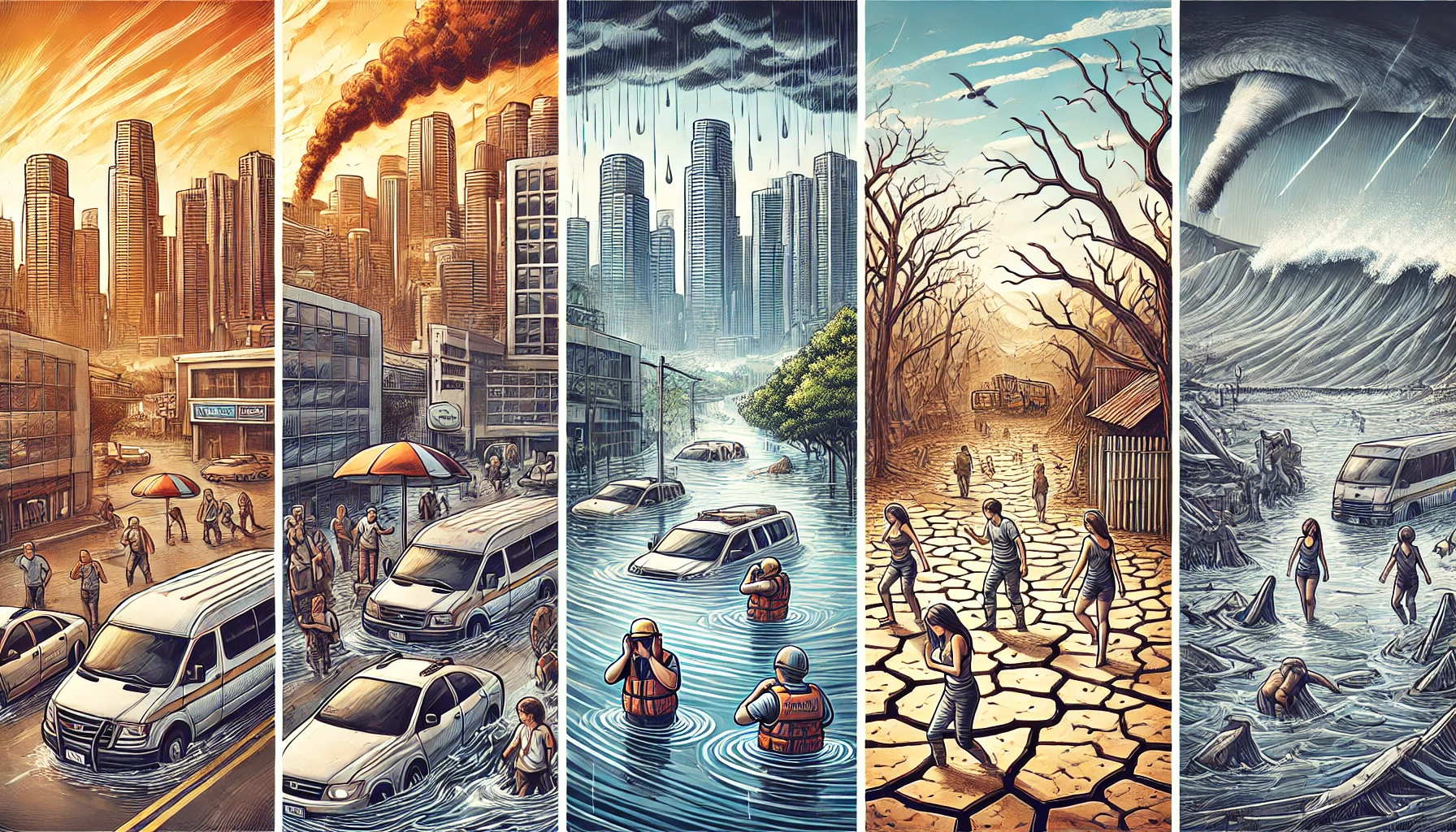Natural disasters have increasingly become a part of daily life as climate change intensifies the frequency and severity of extreme weather events. Heatwaves, floods, and droughts are no longer isolated incidents but ongoing challenges that impact communities worldwide. This article explores how these disasters are shaping our lives and presents insights into their causes and effects, supported by research from leading environmental organizations.
Heatwaves: Rising Temperatures and Health Risks
Heatwaves are prolonged periods of excessively high temperatures, often coupled with humidity, which pose serious health risks. According to the World Meteorological Organization (WMO), global warming has resulted in more frequent and intense heatwaves in urban areas, increasing the risk of heatstroke, dehydration, and respiratory issues (WMO, 2023). A recent report by the World Health Organization (WHO) highlights that heatwaves particularly affect vulnerable populations, including the elderly, children, and those with pre-existing health conditions (WHO, 2022).
Floods: The Consequence of Rising Sea Levels and Unpredictable Rainfall
Flooding, one of the most common and devastating natural disasters, has become increasingly unpredictable. Rising global temperatures contribute to higher sea levels due to melting polar ice, which heightens the risk of coastal flooding. National Oceanic and Atmospheric Administration (NOAA) has reported that climate change has intensified rainfall events, causing flash floods in areas unprepared for such occurrences (NOAA, 2022). Floods not only disrupt transportation and infrastructure but also pose health risks, as stagnant water can breed diseases.
Drought: The Struggle for Water in a Changing Climate
Drought is characterized by prolonged periods of abnormally low rainfall, leading to water shortages that impact agriculture, energy production, and daily life. The Food and Agriculture Organization (FAO) has noted that climate change exacerbates drought conditions, particularly in regions already prone to arid climates (FAO, 2021). Droughts threaten food security by reducing crop yields and forcing communities to rely on limited water resources.
Living with Natural Disasters: The Need for Adaptation and Resilience
To cope with the rising frequency of these natural disasters, communities are adopting strategies to increase resilience and adaptation. Urban areas are investing in green spaces to mitigate heat, while governments are reinforcing infrastructure to withstand floods. Additionally, drought-prone regions are implementing water conservation practices and developing drought-resistant crops, as recommended by the United Nations Framework Convention on Climate Change (UNFCCC) (UNFCCC, 2021).
Conclusion
As climate change continues to alter weather patterns, natural disasters like heatwaves, floods, and droughts have become a part of daily life. Building resilience through adaptation and sustainable practices is essential for minimizing the impact of these disasters on our communities. Collaborative global action is crucial to address the root causes of climate change and safeguard a stable future for all.
References:
- World Meteorological Organization. (2023). Climate and Health Report.
- World Health Organization. (2022). Heat and Health in the Urban Environment.
- National Oceanic and Atmospheric Administration. (2022). The Impact of Climate Change on Flooding.
- Food and Agriculture Organization. (2021). Climate Change and Food Security.
- United Nations Framework Convention on Climate Change. (2021). Climate Resilience and Adaptation.


